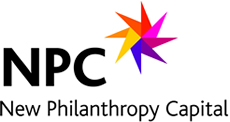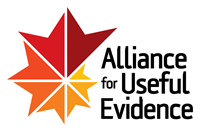Demonstrating Value: What do you want to know and show?
by Garth Yule, Junxion Strategy
With the abundance of evaluation tools, methods and frameworks to choose from, it can be a steep learning curve for you, the organization leader, to know where to start when you want to show the impact of the work your organization does.
The Demonstrating Value workbook provides an accessible, practical approach to developing the content and presentation format for your organization’s work. By setting out a step-by-step series of questions, like: “what do you need to know”, “what do you want to show others”, and “what are you trying to accomplish, anyway”, the workbook lays the foundations for developing your “performance snapshot”, a two to four page document that summarizes your organization’s activities and impacts.
Much of the value to the organization using the workbook comes from the learning experience in the process of getting to the final “snapshot”. Conversations with internal stakeholders (staff, volunteers, managers), external stakeholders (funders, investors, government), and beneficiaries of the work will help you deepen your understanding of what matters most about what you do, and help define the nuances of how to collect and share data and stories in a meaningful way.
The process of developing a snapshot helps your organization self-assess three key capacities:
- How clearly do you know your information needs?
- What is your capacity to collect the information you need?
- What is your capacity to make use of the information collected?
This is valuable insight to have if you would like to enlist the support of a professional evaluator or other consultant, but you first need to assess your needs and clarify the scope of the project. This helps you choose specific tools or protocols for impact measurement – for example deciding whether a rigorous evaluation like Social Return on Investment (SROI) is the right fit for your needs and capacity.
This process also helps ensure that your measurement and evaluation activities are aligned with your organization’s core strategy and/or business plan (as appropriate).
A key intermediate step in creating a snapshot is completing an “information map” – a summary table of the content, which lists your goals, outcomes, indicators, and what data is available and the rationale for collecting it. In my upcoming workshop at the SIAA Talking Data conference, I will help participants create an information map for their organization that summarizes all the content they would want to have in a periodically updated snapshot (monthly or quarterly). This is followed with a walk-through of how to plan for the data collection systems required, and how to present the content in a succinct two to four page “snapshot”.
It’s a great opportunity for organizations that would like a way to rein in their various performance management, evaluation and impact communication activities into a single, comprehensive summary that focuses tightly on what is most important to know and show about the value of their work.
This blog was originally written for our annual conference 2014 Talking Data: measurement with a message. Find out more about the conference here>>
Garth Yule, Engagement Manager at Junxion Strategy will lead the workshop What You Should Know and Show: Build Your Own Performance Snapshot at Talking Data. Read More>>





